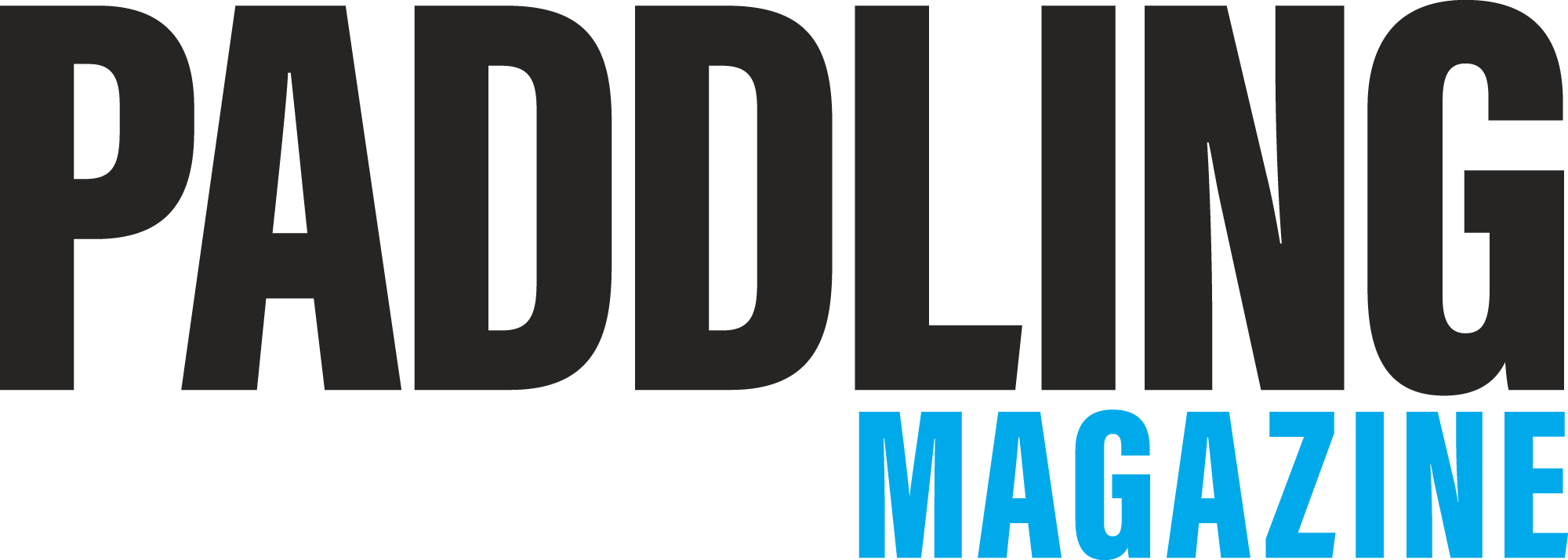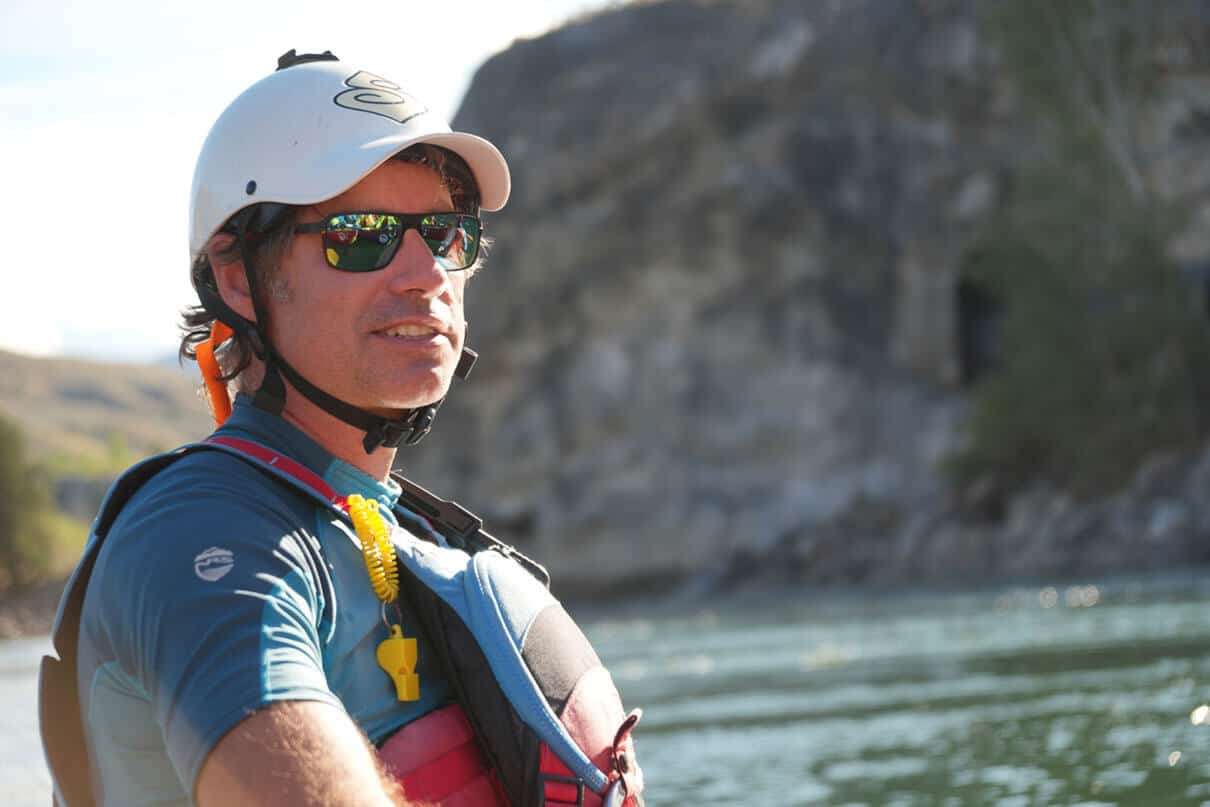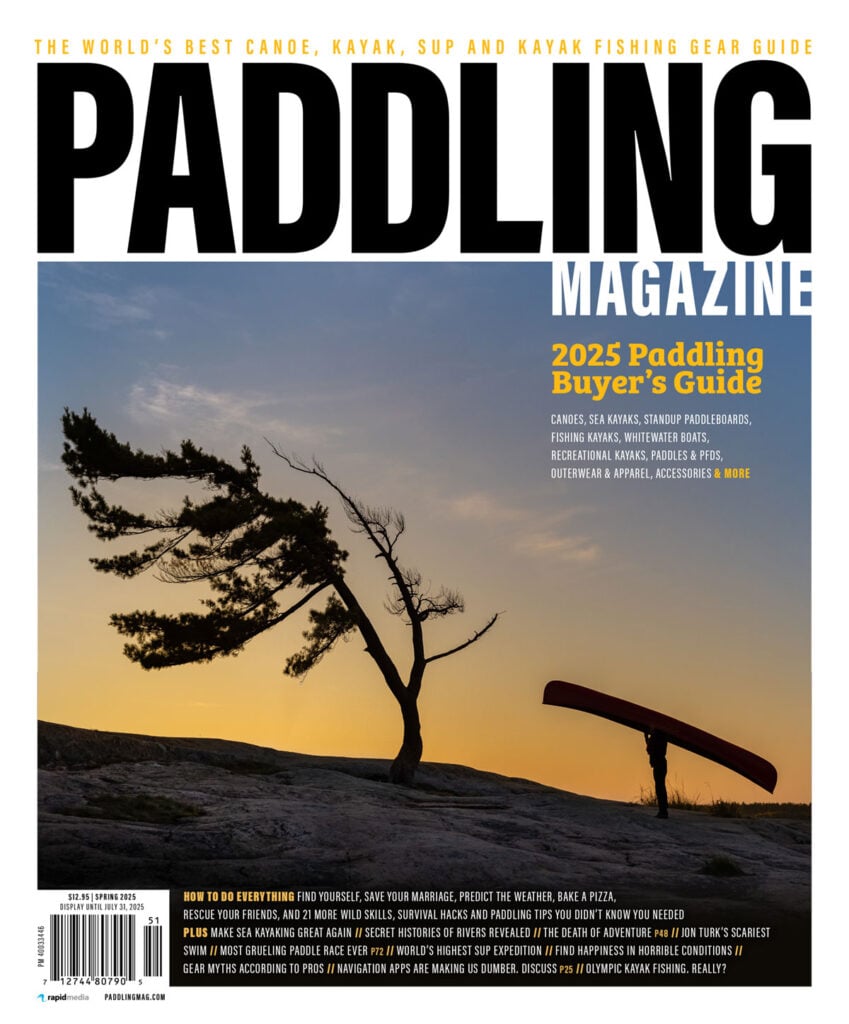Today is February 2nd. Actually. I’m basically Bill, a bitter weatherman forced to cover the same breaking news in Punxsutawney, Pennsylvania, again and again, except instead of reporting on a rodent seeing its shadow, I’m writing 1,000 words about the new Esquif Ocoee.
Esquif Ocoee Specs
Length: 11’2”
Width: 29”
Rocker: 5.5”
Depth: 16”
Weight: 44 lbs
Capacity: 500 lbs
MSRP: $2,329 USD (vinyl)
$2,728 USD (wood)esquif.com
Whitewater canoe review: Esquif Ocoee
My clever introduction won’t make any sense if you didn’t know February 2nd is Groundhog Day and you don’t remember the plot of the ‘90s fantasy comedy film Groundhog Day (that’s a shame, it’s really funny) and like Punxsutawney Phil you’ve been living in a hole and didn’t know the Ocoee has been a new solo canoe six times before—originally by Dagger for the 1993 World Rodeo Championships, Bell Canoe, Nova Craft Canoe, then in composite by Northstar Canoes, Empty Canoes and Echo Paddles.
As soon as Esquif Canoes founder and head designer Jacques Chassé began making T-Formex, I began badgering him to produce an Ocoee. People will buy it, I’d goad him. It will be a wild commercial success, I’d argue. It was a bold request. I was asking a guy who has partnered with the who’s who of whitewater solo canoeing to create a catalog of original, very niche designs to copy one.
He was always politely non-committal, but promised I’d have the first one he made.
When the plastics giant PolyOne stopped pressing sheets of Royalex back in 2014, I bought a spare Nova Craft Ocoee hull and stored it in my neighbor’s barn rafters. I wasn’t the only one stashing Ocoees. When Chassé finally decided it was time, he found an original Dagger Ocoee still in the original plastic wrap. Michael Lewis—yeah, the guy Ain’t Louie Fest is named after—knew a guy in Tennessee.

“At first, I thought I’d revise and try to make it better,” admits Chassé. “Why would I try to change a mystical, iconic boat? Why would I change what so many people believe to be the best one? So, I decided to stick to the original.”
After Esquif ambassador Eli Helbert secured the blessing of Frankie Hubbard’s family—the original designer of the Ocoee—John Duncan’s OG Ocoee hull was on a truck to the Esquif factory to create a new mold.
“When you make a mold over an existing shell, there is some shrinkage,” says Chassé. “We compensated for this to ensure it was as close to Hubbard’s original as possible.”
I didn’t get the first Esquif Ocoee. The first one debuted at the Paddlesports Trade Coalition Colab 2024 industry gathering in Oklahoma City in September. My tester arrived soon afterward, halfway through the 4 Rivers In 4 Days program I jumped on with Elements Adventure Company—a perfect chance to pass the new boat around between instructors and students on British Columbia’s Clearwater River. The owner of Elements, Charles Ruechel, had his own original Dagger Ocoee in the trailer for head-to-head comparison.
Thirty years ago, when Dagger released the Ocoee, they said it was “A super-short, flat-bottomed, hard-chined boat, specifically for the highly-skilled paddler.”
The world was simpler then. Apparently, hyphens were all the rage, as were larger, softer and rounder-bottom solo canoes like Dagger’s Genesis, Impulse and Rival. Mad River Canoe had the Outrage.
At 11’2”, the Ocoee isn’t short anymore. In fact, it’s now one of the longer and faster solo whitewater canoes in production.
The Ocoee is still popular for open canoe slalom and is as likely to win medals as the Esquif Spark, depending on the course. The speed of the Ocoee combined with the hard chines produces an unmatched magical feeling when carving in and out of eddies and across currents. Okay, there is one feeling as magical and that’s carving into an eddy way too small for an 11-foot boat and dropping the outside edge to pivot and stick it. If you know, you know. And that’s why Chassé re-released the Ocoee.
“The L’Edge is our best-selling whitewater boat and has inspired other designs making it easier to paddle harder rivers,” says Chassé. “But we know there are many people aspiring for pleasure by performing their best precise, technical moves, not necessarily running the hardest stuff. The Ocoee is known for that.”

The reason Dagger said the Ocoee was specifically for highly-skilled paddlers is because of the flat bottom and hard chine combo. To beginner canoeists and those coming over from more initially stable solo or tandem canoes, it feels tippy. Sort of. The Ocoee wants to fall from one side to the other. It settles there nicely if you let it, but this takes some time in the saddle to get used to.
It’s charming Chassé didn’t fiddle with the Ocoee and produced the original Hubbard design. Admirable. And ironic.
Why ironic? Because the Ocoee is probably the most easily modified, and most modifiable, whitewater boat of all time. It’s like the Honda Civic for solo-canoe-tuner nerds.
Widen the thwarts for more initial stability or big water. Narrow thwarts to sharpen chines for more precise carving and pivots. Change thwart positions for a faster asymmetrical shape. Reduce sheer to make it easier to roll and sneak under gates. Or do a combo of all three. Hell, Uwe Fischer won the ‘95 World Rodeo Championships in an Ocoee with a foot cut out of the middle.
One thing you shouldn’t mess with is the saddle position.
In a rush to get my tester on a truck and headed west, it came equipped with Esquif’s pedestal saddle glued too far forward. The OG Dagger we had with us had the saddle two inches too far back. Neither felt quite right to this Goldilocks.
It wasn’t until we got a tape measure and made a call to Brian Shields that we figured it out. Shields was the guy installing all Mike Yee Outfitting from 1998 to 2016. He’s outfitted truckloads of Ocoees over the years. The rise of the saddle should be 75 inches back from the bow, so roughly seven inches back of center. Which makes sense, putting your torso at the center point as it should be. Yes, it makes a difference.
Three decades ago, the Ocoee set the standard for surfing and technical paddling. Esquif has a full catalog of racier slalom canoes, shorter polyethylene creeking canoes, and slicier freestyle canoes. However, if I was trapped in Punxsutawney, Pennsylvania, where I had to wake up every day and go paddling in just one boat for the next 30 years, you know what I’d choose. And it’d be red with ash trim, like every Ocoee I’ve always had.
Elements Adventure Company guide and instructor Emily Cole doing what the Ocoee does best—precision paddling. | Feature photo: Scott MacGregor






 This article was published in Issue 73 of Paddling Magazine.
This article was published in Issue 73 of Paddling Magazine. 